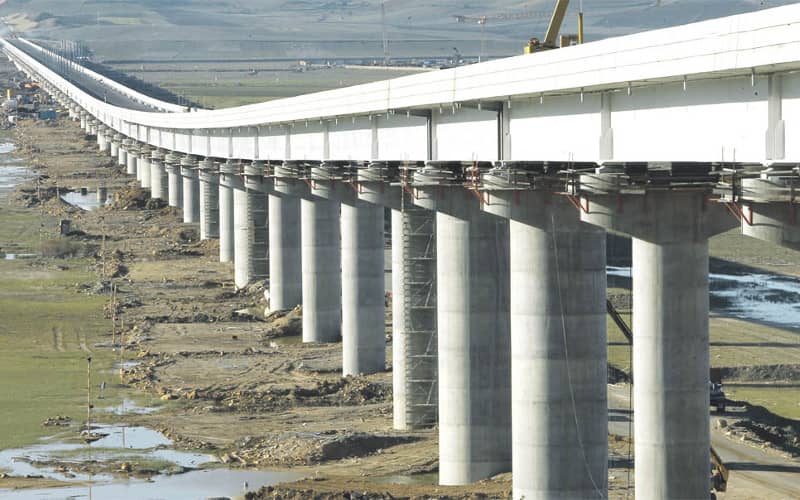Construction is moving ahead steadily on what will soon become Morocco’s largest road viaduct, spanning the Oued Sakia El Hamra as part of the Laayoune bypass route. According to M’bark Fancha, director of the provisional management overseeing the RN1 corridor between Tiznit and Dakhla, the project has already reached 23% completion.
This massive infrastructure undertaking, with a projected cost of 1.38 billion dirhams, is a key component of the Tiznit-Dakhla expressway—an initiative tied closely to the broader development strategy for Morocco’s southern provinces. Once finished, the viaduct will stretch 1,648 meters in length and measure 21.4 meters wide. Its design includes 15 spans supported by deep foundation piles, adding up to an impressive seven kilometers of substructure.
More than just an engineering feat, the viaduct is designed to address multiple challenges: easing congestion at Laayoune’s entrance, maintaining traffic flow during floods, enhancing road safety, and improving the movement of goods and people toward the southern regions. It will feature two separate carriageways with two lanes each, as well as a pedestrian walkway.
This bridge stands out as a flagship element of the larger expressway linking Tiznit to Dakhla—a 1,055-kilometer route that is now fully completed. Road signs and safety systems have been installed, and the entire stretch is currently in a trial phase to assess performance under real-world conditions.
The total investment for the expressway exceeds 9 billion dirhams. Built to international engineering standards, it includes 16 bridges and viaducts, seven rest areas with truck parking, 18 runoff control zones, and six urban bypasses. Launched in 2015 in Laayoune under the leadership of King Mohammed VI, the project is a cornerstone of Morocco’s vision to boost the southern region’s economic growth and shorten travel times—cutting up to five hours for light vehicles.
The expressway is the result of a multi-agency partnership, bringing together various ministries and regional councils. Beyond its logistical benefits, the project carries a clear geopolitical aim: to knit the southern provinces more tightly together and reinforce Morocco’s integration with sub-Saharan Africa through modern infrastructure and expanded trade corridors.
